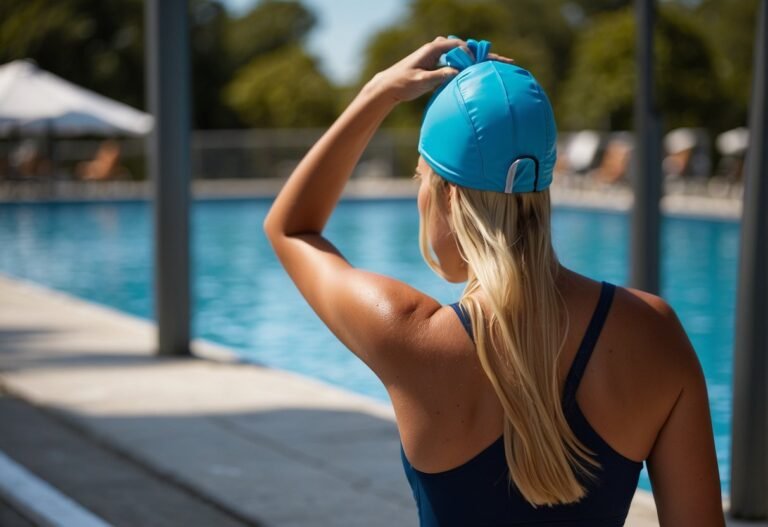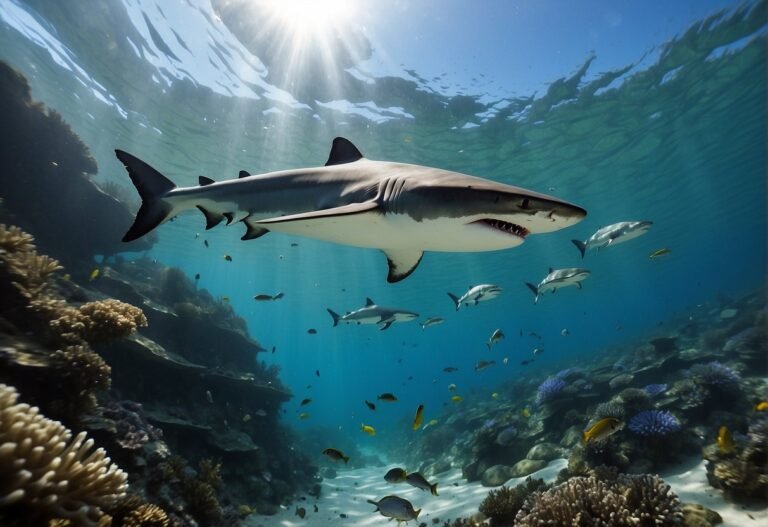Wondering if you can explore the underwater realm without being a swimmer? Our article, “Do You Need to Know How to Swim to Snorkel? 7 Expert Tips,” dives into the essentials of snorkeling for non-swimmers.
Essentials of Snorkeling
Snorkeling Gear Basics
Your snorkeling gear is your key to unlocking the underwater world. Start with a comfortable, well-fitting mask; it should seal properly to keep water out without being too tight. A snorkel allows you to breathe with your face submerged, and choosing one with a purge valve can make clearing water easier.
Fins enhance your mobility, helping you to glide effortlessly; make sure they fit snugly but don’t pinch or rub. For many, a full face snorkel mask can be a more convenient option, integrating the mask and snorkel.
Perfecting Your Technique
Good technique is essential for saving energy and staying safe. Practice your breathing—deep, relaxed breaths through the snorkel, even before you get into the water. Master floating on the surface and use a relaxed breaststroke to move around without expending too much energy. Stay horizontal to optimize your buoyancy and visibility.
Understanding Your Environment
Awareness of your surroundings ensures a memorable and safe snorkeling trip. Always take note of the ocean conditions—including waves, tides, and currents—and only snorkel in calm waters. Explore areas with abundant marine life and coral, but be sure to maintain a safe distance to protect both the environment and yourself. Keep an eye on the weather and always apply sunscreen to protect your skin from sunburn.
Safety Measures
Snorkeling is fun, but safety comes first. Always snorkel with a buddy and keep each other in sight. Wear a life jacket or flotation device to help you stay afloat, especially if you’re not a strong swimmer.
Keep safety equipment such as a whistle or a flag nearby to attract attention in case of emergency. Be cautious of riptides and avoid areas where drowning accidents are known to occur.
Dealing With Challenges
Encountering challenges is part of the snorkeling experience. In case of fatigue, float on your back and take deep breaths to relax. If you start panicking, remember to keep breathing slowly and signal your buddy for assistance. Minor injuries can be prevented by wearing appropriate protection, like a water shirt or rash guard to avoid cuts from coral or other sharp objects.
Snorkeling for Non-Swimmers
Even if you can’t swim, you can still enjoy snorkeling. Start by practicing in a swimming pool to gain water confidence. Use a life jacket or flotation device for buoyancy and peace of mind. It’s important to snorkel with someone who has experience and can assist if needed. Take time to relax and breathe normally, and don’t venture into deep or challenging areas until you have developed a level of confidence in shallow water.
Pre-Snorkeling Preparations

Selecting the Right Location
When choosing a snorkeling site, look for beaches with calm, clear waters. This maximizes your visibility and minimizes the risk of struggling against strong currents. Ideal locations are often sheltered bays or lagoons with abundant marine life. Remember, a safe and comfortable environment is key to a memorable snorkeling experience.
Equipment Check and Maintenance
Your gear is your lifeline in the water, so it must be in prime condition. Snorkeling essentials include a mask, snorkel, and fins. To prevent fogging and maintain a clear view underwater, apply defogging solutions to your mask or use household items like toothpaste or baby shampoo. Rinse your gear with fresh water after use to preserve its integrity.
- Mask: Ensure a good fit with no leaks.
- Snorkel: Check for obstructions and ease of breathing.
- Fins: They should be snug but not too tight.
Tip: Always test your gear before entering the water.
Practical Snorkeling Tips
For a stellar underwater adventure, focus on relaxation and breathing. Practice deep, slow breaths with your snorkel on land to get used to the sensation, and repeat in shallow water before venturing out.
- Relax: Stay calm to conserve energy and air.
- Breathe: Inhale and exhale deeply and slowly through your snorkel.
- Swim: Use gentle fin kicks to glide over the water.
Enhancing the Snorkeling Experience

Encountering Underwater Life
Dive into an enchanting world where fish dart through coral reefs and jellyfish pulsate with grace. Keep an eye out for the majestic dance of rays or the occasional inquisitive turtle. Remember to ** float on the surface ** gently to preserve this delicate habitat.
Snorkeling Add-ons
Boost your snorkeling foray with accessories like snorkel vests for buoyancy, rash guards to protect against sunburn, or full face snorkel masks for a panoramic view. A dry snorkel will keep saltwater out, and a purge valve makes expulsion of accumulated water effortless.
Snorkeling as a Gateway
Embrace snorkeling as your introduction to the ocean’s wonders. It can be a step towards scuba diving adventures or a lifelong appreciation for marine conservation. Your snorkeling guide may provide extra insight into the underwater realm.
Snorkeling Etiquette
When you snorkel, you visit nature’s home. Show respect—do not disturb or touch the marine life, including coral. Let the ocean’s citizens come to you, creating moments of sheer awe without impacting the underwater world.
Beyond the Basics
After mastering floating and using your snorkeling gear, explore propulsion techniques for a more efficient swim. A wetsuit can extend your time in colder waters, and an underwater camera captures moments among the vibrant hues of the ocean.
Learning Resources
For newcomers, a beginners guide or snorkeling tips can pave the way to a rich snorkeling experience. Taking swimming lessons can enhance confidence in open water, allowing you to safely snorkel with a buddy and fully enjoy the serene surface activity.
FAQ:
Can I go snorkeling if I can’t swim?
Yes, you can go snorkeling even if you can’t swim, but you should wear a life jacket and stay near the shore or a support person.
Should you learn to swim with a snorkel?
Learning to swim with a snorkel can enhance your comfort in the water and improve your snorkeling experience.
Do you need to learn to snorkel?
While not mandatory, learning to snorkel through a class or instruction can boost confidence and safety in the water.
Is snorkeling considered swimming?
Snorkeling is considered a water activity, but it’s not swimming in the traditional sense as it involves floating at the surface with minimal swimming motions.






